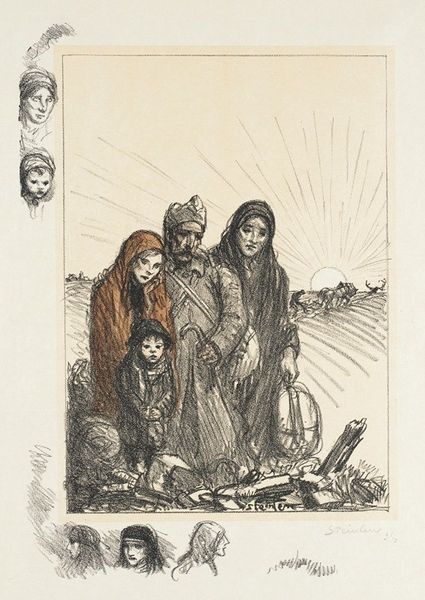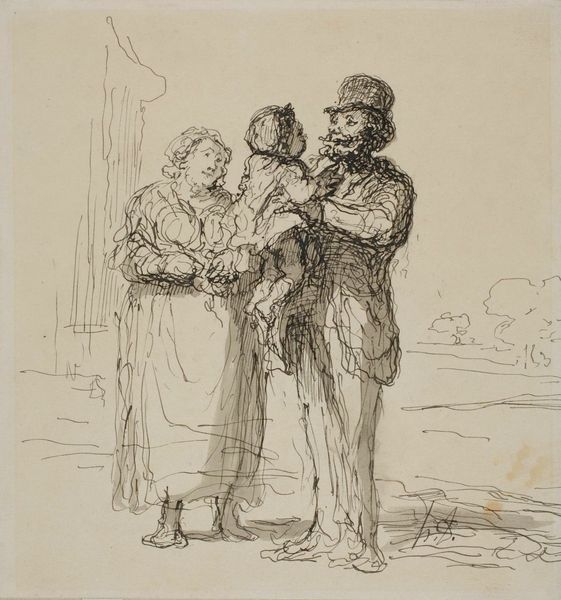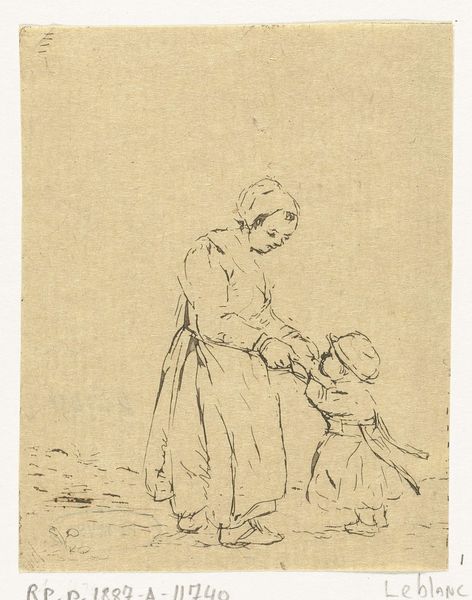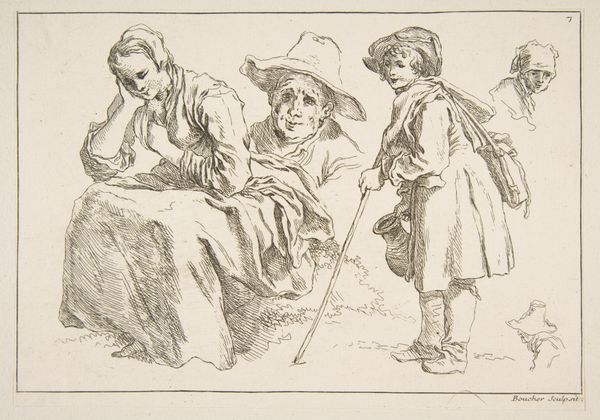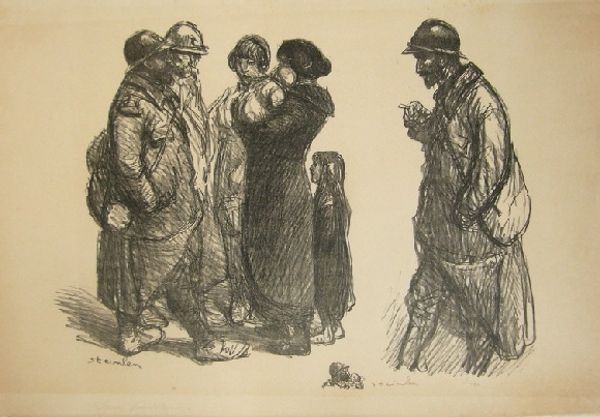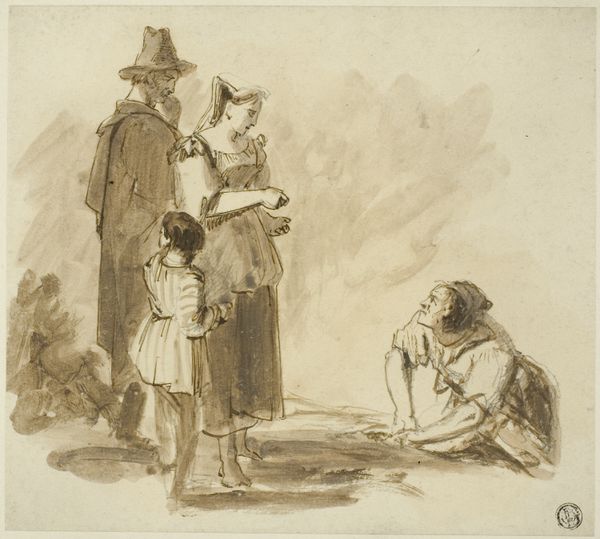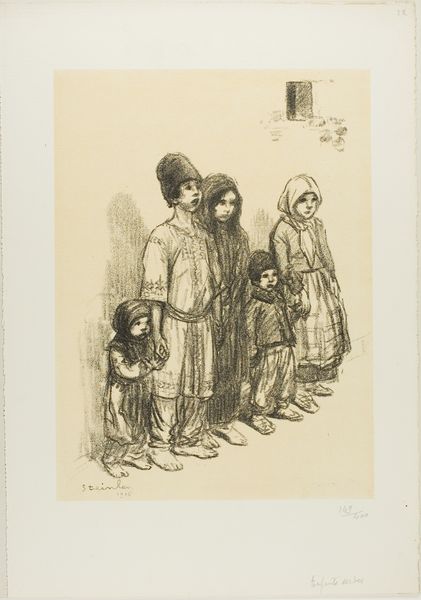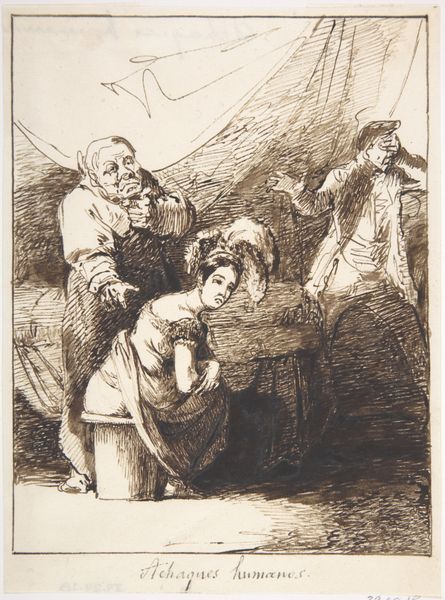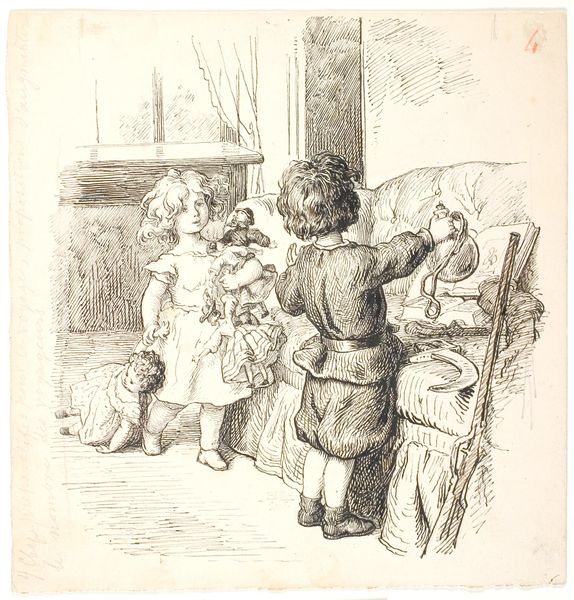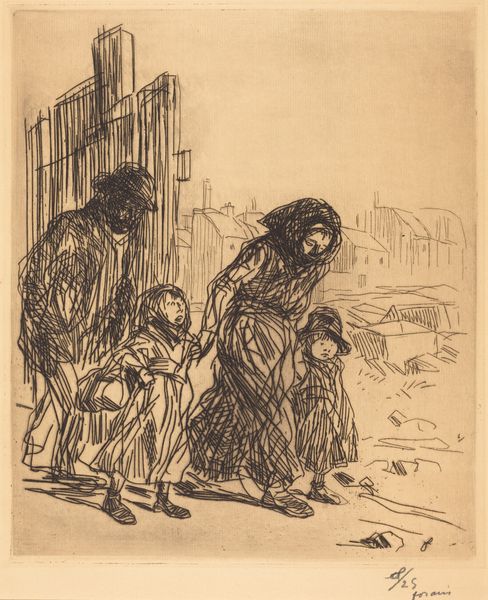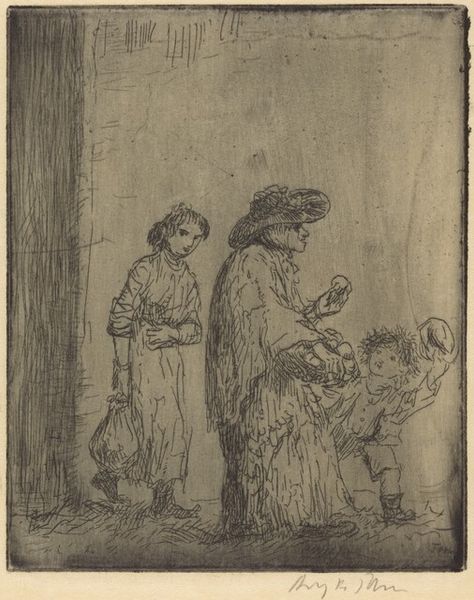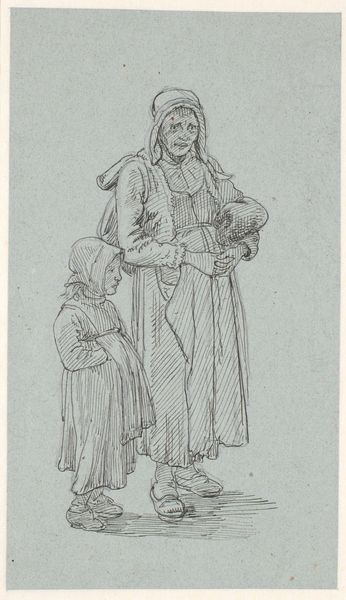
Copyright: National Gallery of Art: CC0 1.0
Editor: So, this is Théophile Alexandre Steinlen's "Poor People," created in 1914 using lithograph and pencil. It definitely hits you right away with a feeling of hardship and, well, poverty. The way he’s rendered their faces, so worn, it’s quite affecting. What strikes you most when you look at this piece? Curator: Ah, Steinlen! He had such a sensitive eye. What grips me is the silence in this gathering, doesn't it? Each figure seems trapped in their own world of weary resignation. The man’s eyes—do you notice how they look simultaneously defeated and fiercely protective? It's like a visual paradox. Editor: Absolutely! And the children...they seem so small and vulnerable. It's interesting how he uses light and shadow. Curator: Yes, the stark contrast creates a dramatic, almost theatrical effect, highlighting the emotional weight of the scene. But I wonder, beyond the obvious poverty, what else is Steinlen trying to say about community here? Is it breaking down, or holding on? What do *you* feel? Editor: Hmmm... That's a tough one. There is a definite sense of togetherness, but that weariness you mentioned suggests a struggle to maintain it. It's a powerful message. The bleak setting emphasizes that idea of holding on with just the bare minimum of resources, right? Curator: Precisely! Steinlen wasn't just depicting poverty; he was inviting us to witness the quiet dignity and resilience of those living within it. And that’s a conversation still incredibly relevant, wouldn’t you agree? Editor: Definitely. Seeing the ordinary elevated with such depth and skill--it just reinforces why art matters, doesn't it? Thanks for sharing your perspective; I see it so differently now!
Comments
No comments
Be the first to comment and join the conversation on the ultimate creative platform.
